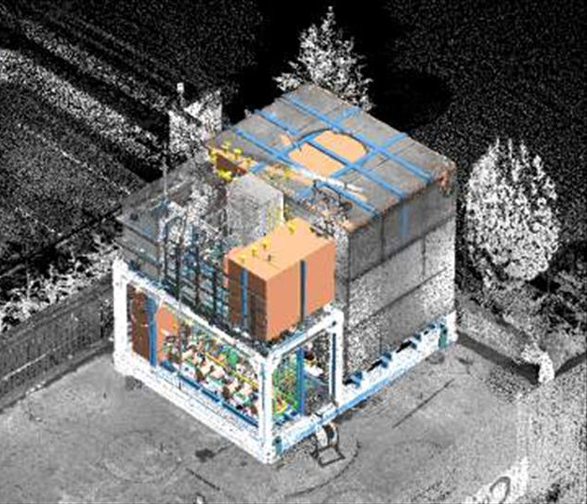Scratch a construction executive today, owner or contractor, and you’ll find growing concern about the shortage of skilled managers and craft labor to execute projects. Scarcity of execution resources is driving up rates – it’s a seller’s market for piping engineers in the Texas Gulf Coast, for example. Buying your way out of the problem by paying more is nearly always an option, but that has a way of quenching demand. Are there other remedies? Can technology help?
Work where the workers are
One obvious remedy to labor constraints is to partition construction projects into modules. Then fabricate the modules in geographies where skilled labor resources are more abundant and an adequate transportation infrastructure exists. This is not a new idea. The offshore construction industry has been doing it for years. Offsite fabrication is common practice in many onshore projects as well. The motivation is not just economic; safety is a driver too. The explosion of the Piper Alpha platform in the North Sea nearly twenty years ago drove the industry to find new ways to perform hot work (welding, cutting and grinding) back on the beach instead of offshore.
Modular construction challenges
While modular construction can help, it brings its own headaches. Chief among these is the need to ensure that when modules show up on the job site, they fit together. That sounds simple but it isn’t. Why? One reason is that fabricated items don’t always correspond to the design. Human errors, misunderstandings, equipment substitution and poor communication can all lead to rework on the construction site. On-site solutions to fit-up problems aren’t always subtle – bring out the cutting torches, welding units, jackhammers, hydraulic jacks and come-alongs. Left unmanaged, the cost and schedule impact of fixing these problems in the field quickly eats up the savings of partitioning the work in the first place. The asset owner gets to pay three times: first for the modules, second to fix the modules, and third for the maintenance – stressed components wear out faster, often unpredictably.
Dimensional control is key
One lesson of successful modular construction projects is to deploy dimensional control throughout the project. Locating tie-ins and anchor bolt locations, verifying footing dimensions and positions – i.e., validating the jobsite geometry – is just the beginning. Dimensional control also means measuring fabricated elements before they leave the shop. Only then is it possible to execute a digital fit-up.
The good news is that it’s never been easier or cheaper to capture field conditions and to measure as-fabricated geometry. Today’s 3D laser scanning systems, total stations and GPS/RTK positioning sensors make this both fast and economical. The software to process this wealth of measured data so that clashes and collisions can be trapped in the office gets better every month. The technology is proven and it is priced within reach.
What’s holding us back?
Despite all this, many CAD departments don’t get dimensional control yet. Even fewer CIOs get it. Designers lament, “If only construction would build it the way we designed it, this problem would go away.” However, most designers we’ve come across look at the world through orthogonal glasses – it’s beyond their ken to model sagging pipes and out-of-plumb steel.
Project managers do get it – after they see it work at least once. However, a poorly executed laser scanning job can poison the well for a long time.
CAD companies are starting to get it. AVEVA, Bentley, COADE, Intergraph all have products and services in this domain, though for some CAD vendors these are still early days.
Management issues
The rapid evolution of dimensional control technologies raises at least two management issues. First, should engineering/construction contractors develop this expertise for themselves – should there be a vice president of dimensional control to develop best practices across multiple projects? Perhaps this is the new role for the chief surveyor? As well as understanding dimensional control and measurement, this person has to have credibility with the project managers, and be able to marshal support from engineering and the fabrication folks. This person has to know how to develop the necessary in-house resources to do the work, or else be savvy enough to contract for it with the best specialists in the industry. Absent a strong champion, initiatives such as dimensional control wither for lack of strong-willed pushing.
A second management challenge is to engage the skilled field labor in this endeavor. Some of the most successful efforts we’ve seen to date made sure to get the pipe fitters, welders and HVAC fabricator shop people on board for the implementation. Their insights into what’s practical today can be priceless.
A related lesson – deploying dimensional control as a cudgel to find fault can be a loser tactic. Using dimensional control to validate what’s right can be a winner.
The solution to the problem is not simple. Today’s fast-track project execution means design, construction and fabrication all run in parallel – this makes the most economic sense. However, scope and engineering changes are not always well communicated, either down or up the fragmented construction supply chain. In time perhaps communication will be perfect in both directions. World peace might break out too! Until then, today’s dimensional capture and control systems offer a sensible way to close the loops between design, construction and fabrication.
Presentations and case studies on dimensional control for modular construction will be a feature of SPAR 2007: Capturing and Documenting Existing-Conditions Data for Design, Construction and Operations, March 26-27, Houston, TX.






